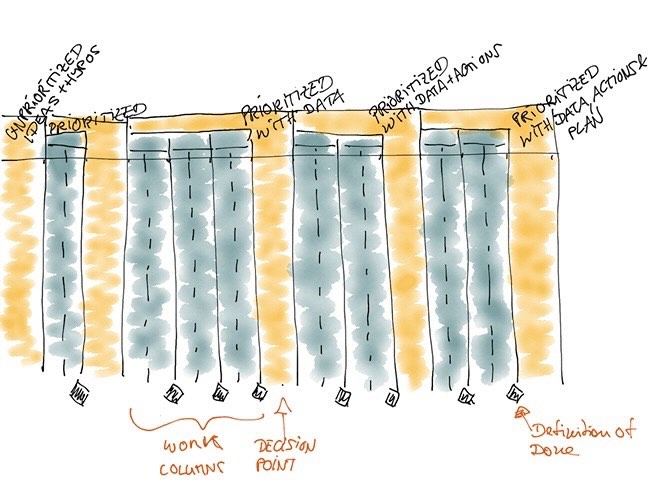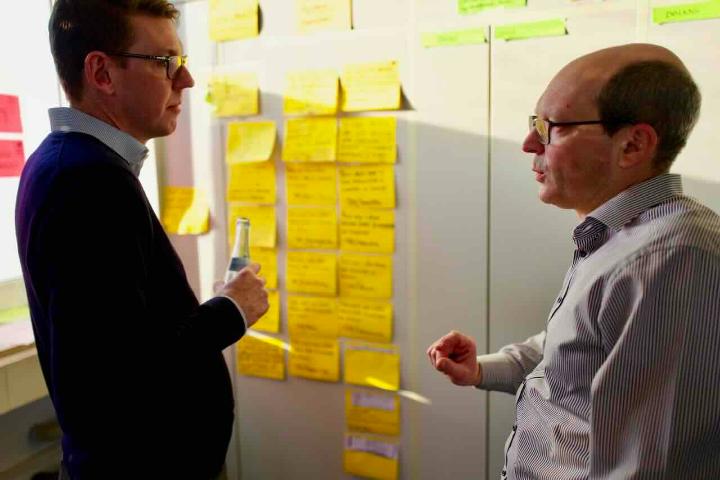Develop a strategy yourself
Strategy work is a regular occurrence in every company. More and more of our customers are asking themselves: "How can we position ourselves appropriately in a VUCA world?" Typical questions are:
- As a growing and internationally active company, how do we manage to preserve our internal dynamics and DNA that characterize us - e.g. as a family business?
- How can we continue to shape our company in such a way that we can continue to deal excellently with volatile market conditions in the future and deliver added value for our customers in shorter production cycles? In short: How do we make our company resilient in a VUCA-world?
- How can we develop the content of the strategy independently and in a participatory manner so that the knowledge and ideas arise in the minds of the company - instead of having the ideas developed externally and then laboriously "rolled out"? How can we still receive effective support in the strategy development process?
- How do we take our employees with us on this journey and expand their entrepreneurial thinking at the same time?
Agile techniques for strategy development
Together with our clients, we design an individual answer to these questions. In doing so, we combine agile techniques and classic strategy work. Typical elements are
- Self-organized teams from the organization across competencies to develop the content of the strategy;
- A Kanban to visualize the strategy development process, agree on outcome expectations and manage progress collaboratively;
- Regular PDCA (Plan-Do-Check-Act) to deliver regularly and adapt the process if necessary;
- A team that is empowered to make final directional decisions and ensures that the pieces of the strategy fit together;
- Another team - consisting of colleagues from the client and wibas - that designs and moderates the process.
Two birds, one stone: a strategy and the diffusion of agile DNA at the same time
What do our customers say about why it is worth getting involved with this approach?
- A strategy is created - the PDCA cycles provide early results that can be inspected and improved.
- The employees' knowledge of the market and customer needs is utilized and the strategy is born in the minds of the subsequent implementers and multipliers;
- The strategic measures are already effective during the development process and have a high level of acceptance among employees;
- Everyone involved - and managers in particular in strategy work - experience first-hand what it can mean, to work agile;
- Those involved multiply agility during the process. This leads to the fact that Agility spread "incidentally" within the company;
- By learning agility in the strategy creation process, stakeholders also consider how the implementation can be agile so that the company is dynamic and responsive to the market (rather than following a rigid 5-year plan) - and in a robust way.
Concrete example
Clifford Sell describes how this actually worked in the case of E-T-A. Here is his report as a video.



Write a comment